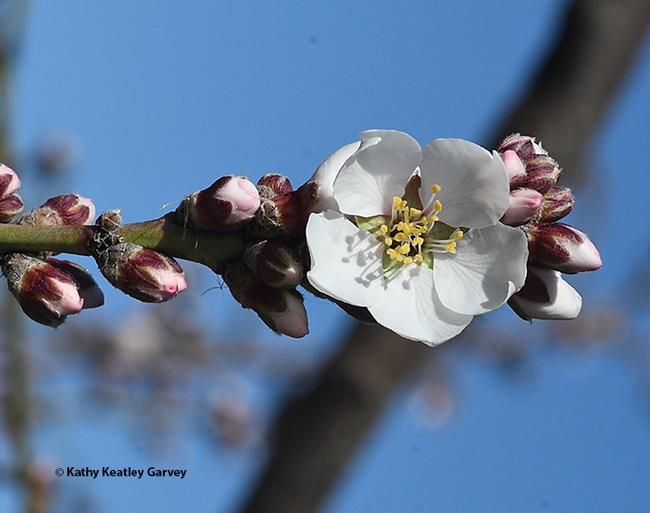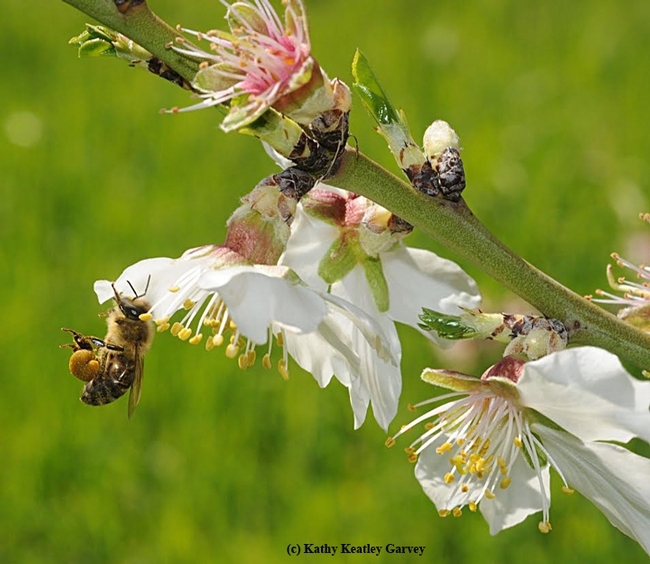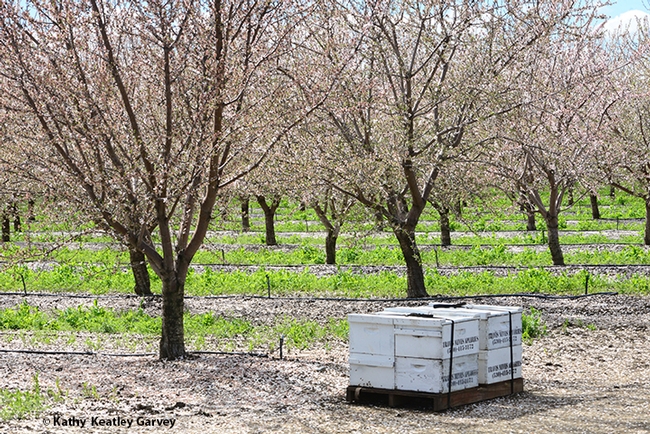Hear that buzz? California almond pollination season is approaching.
The season usually begins around Valentine's Day, Feb. 14, but we usually see the first-of-the-year almond blooms in mid-January in a hot spot near the Benicia marina.
That's where we saw them on Jan. 23, but they've bloomed in that vicinity as early as Jan. 1.
Almonds are big business in California, a burgeoning big business.
The most report of the California Field Office of the USDA's Agricultural Statistics Service, released April 23, 2020, indicates:
- California's 2019 almond acreage is estimated at 1,530,000 acres, up 10 percent from the 2018 acreage of 1,390,000.
- Of the total acreage for 2019, 1,180,000 acres were bearing and 350,000 acres were non-bearing. Preliminary bearing acreage for 2020 was estimated at 1,260,000 acres.
- Nonpareil continued to be the leading variety, followed by Monterey, Butte, Carmel, and Padre.
- Kern, Fresno, Stanislaus, Merced and Madera were the leading counties. These five counties had 72 percent of the total bearing acreage.
It takes about two bee colonies per acre to pollinate the California almonds. Since California can't meet that requirement--we don't have enough bees!--the little agricultural workers are trucked here from all over the United States.
According to Nov. 23, 2020 article, "2021 Almond Pollination Outlook and Other Considerations," published in West Coast Nut:
"Idaho, North Dakota and Florida remained the top three states shipping colonies into California. Many honey bee colonies are transferred from the Northern Great Plains to the Pacific Northwest after honey production is finished to be held (often indoors) until almonds bloom in California. So, even though Idaho looks like the top shipping state according to CDFA border shipment data, many of those colonies in reality are coming from elsewhere. The shipment of colonies to storage in the Pacific Northwest is a trend that looks to continue into the future. Many beekeepers have seen lower mortality rates from storing colonies indoors over the winter."
Hear that buzz? It's almost time.
Attached Images:

An almond blossom graces an area near the Benicia marina on Jan. 23, 2021. (Photo by Kathy Keatley Garvey)

A honey bee packing her pollen on Bee Biology Road, UC Davis, before returning to her hive. (Photo by Kathy Keatley Garvey)

Bee hives in front of an almond orchard on March 8, 2019 in Dixon. (Photo by Kathy Keatley Garvey)